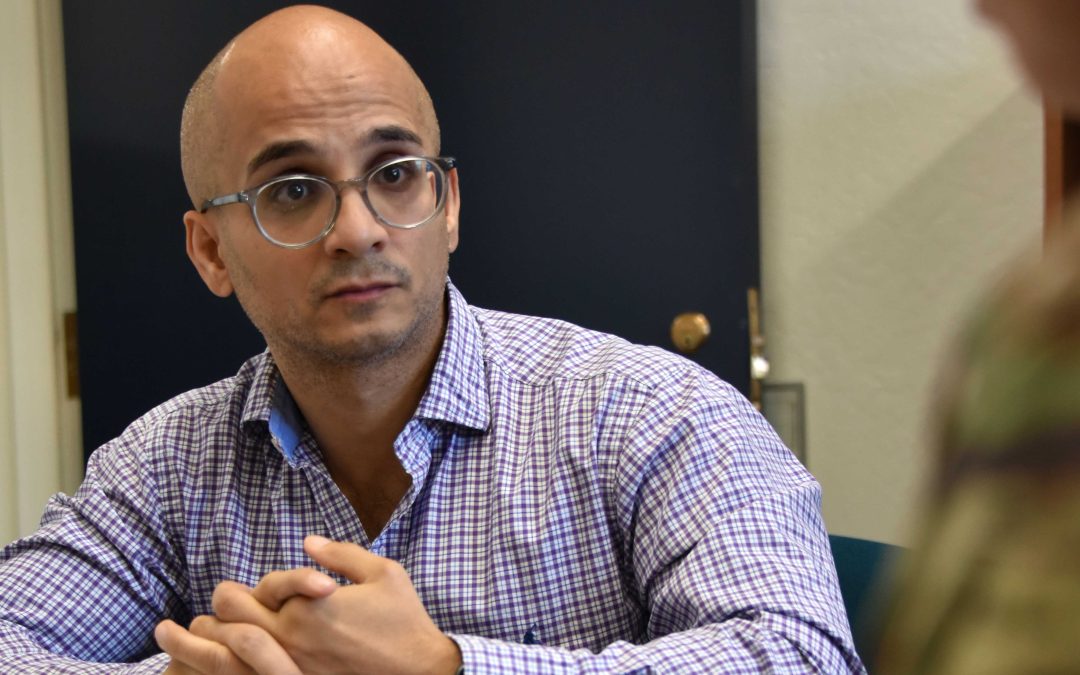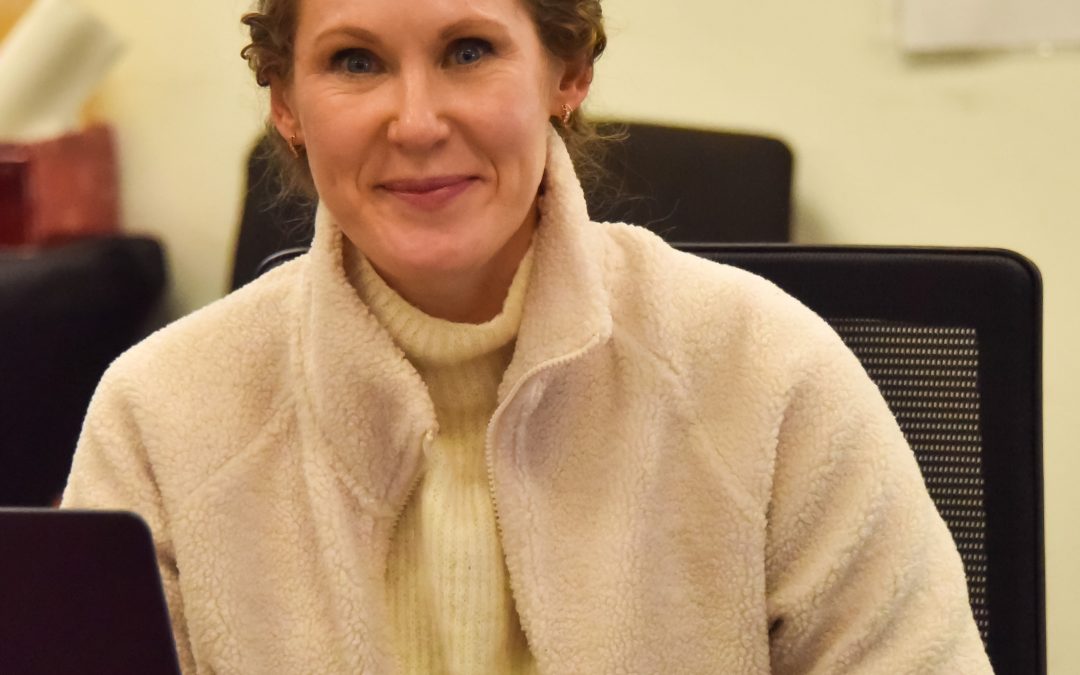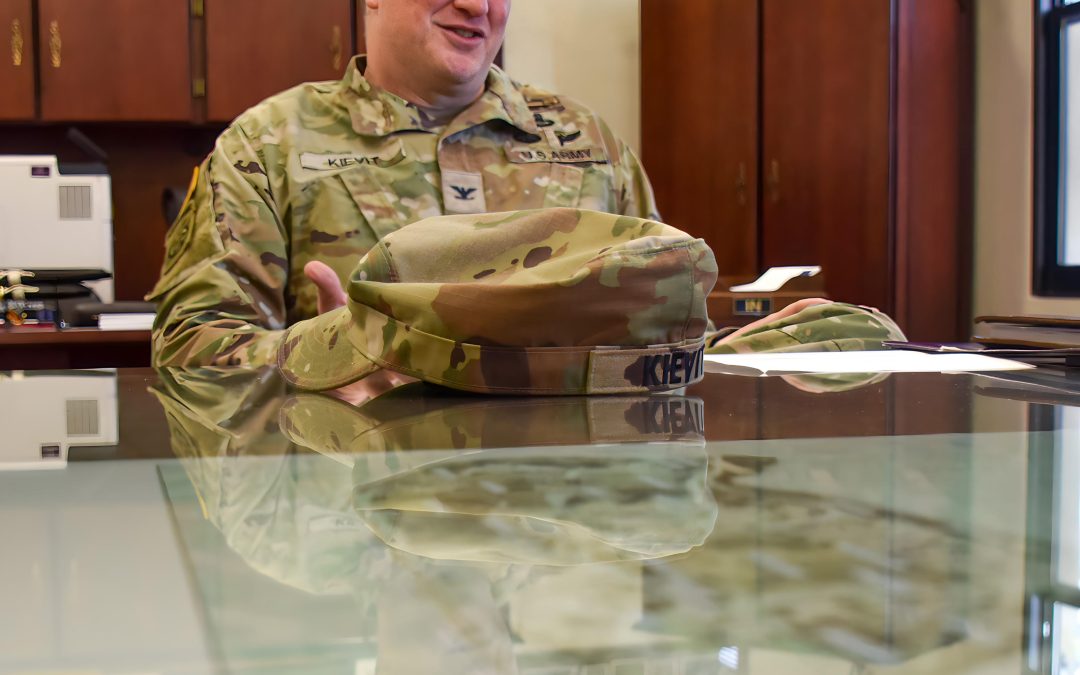By Brian Lepley
Presidio of Monterey Public Affairs

Staff Sgt. Neika Thompson answers questions from a group of Company C, 229th Military Intelligence Battalion Soldiers after morning formation. (U.S. Army photo by Brian Lepley/Released)
MONTEREY, Calif. – A traditional symbol returns to Army training companies after 11 years away.
The 229th Military Intelligence Battalion, along with all Advanced Individual Training units, has its first drill sergeants since 2007.
Four NCOs graduated a two-week U.S. Army Drill Sergeant Academy conversion class Feb. 23 at Fort Jackson, South Carolina. By August, drill sergeants will be in charge of all Phase IV and V Soldiers at the Presidio of Monterey.
Sgt. 1st Class Guy Smith and Staff Sgt. Neika Thompson of Company C, Staff Sgt. Carter McSwain of Co. F and Headquarters Company’s Staff Sgt. Huiying Liu are now on duty with the distinctive brown cover.
They realize that managing platoons Defense Language Institute Foreign Language Center students requires a different touch than AIT drill sergeants at Forts Benning or Sill.
“DLI is a very high-stress environment. We’re here to mentor these Soldiers, care for these Soldiers, keep them within standards, and prepare them to join their next units,” Smith said. “We see a lot of older students here that have significant life experiences, a wide range of different age groups, so it’s a unique training environment.”
The Army decided to replace drill sergeants in 2007 with AIT platoon sergeants. They were to act as mentors to trainees, preparing them for first unit of assignment and acclimating them to the operational Army environment.
Based on reports from line units of discipline standards and attrition in the last few years, the Army reversed course.
All current 229th platoon sergeants will become drill sergeants, a strategy Co. B 1st Sgt. Clint Rowe agrees with.
“I’m impressed with our NCO force in the battalion and now they’ll get the additional drill sergeant pay and drill sergeant credit towards promotion,” he said. “They were essentially doing the job already. That’s not going to change with the hat.”

Sgt. 1st Class Guy Smith gives Company C, 229th Military Intelligence Battalion, its last instructions at morning formation. (U.S. Army photo by Brian Lepley/Released)
McSwain attended the AIT Platoon Sergeant course at Fort Jackson last year and has been at Co. F since July 2017. He says his duty attitude and demeanor isn’t any different now with the hat but there is a change in how Soldiers perceive him.
“In class they have a staff sergeant next to them saying ‘Hey, what did you get for problem four?’ and they had a AIT platoon leader staff sergeant telling them their leave form is jacked … might be hard to differentiate,” McSwain said. “Now I’m wearing a drill sergeant hat. There’s a line there that says this person is in charge.”
He was in AIT in 2008, soon after drill sergeants had just taken off their brown rounds to become AIT platoon sergeants.
“My platoon sergeants were still yelling and screaming when a pen would drop,” McSwain said of those days at Fort Huachuca, Arizona.
Co. F’s Third Platoon held their breath for his return. Pvt. Haley Archie, a Persian-Farsi student, admired Platoon Sergeant McSwain.
“He came back as a drill sergeant and he’s still the great leader he’s always been. We were a little worried; ‘Is he going to come back and be different?’ And he’s not,” she said. “He puts Third Platoon first, he puts his Soldiers first. He goes above and beyond.”
The drill sergeant as authoritarian or totalitarian, Smith believes, will not be how the NCOs of the 229th will function.
“I don’t think any of our AIT platoon sergeants that put on this hat is necessarily going through a transformation,” Smith said. “The brown round is essentially a tool to reinforce discipline, reinforce that we are in the Army, that there are certain standards you have to meet.”
Readiness and discipline are the drill sergeant’s primary teaching points for DLIFLC Army students.
“For the Soldiers that are just getting here, I tell them ‘Relax, I’m not a basic training drill sergeant. I’m not going to be yelling and screaming at you,'” McSwain said. “The Soldiers who have been here a while, they know me, they understand; now they just call me drill sergeant.”




